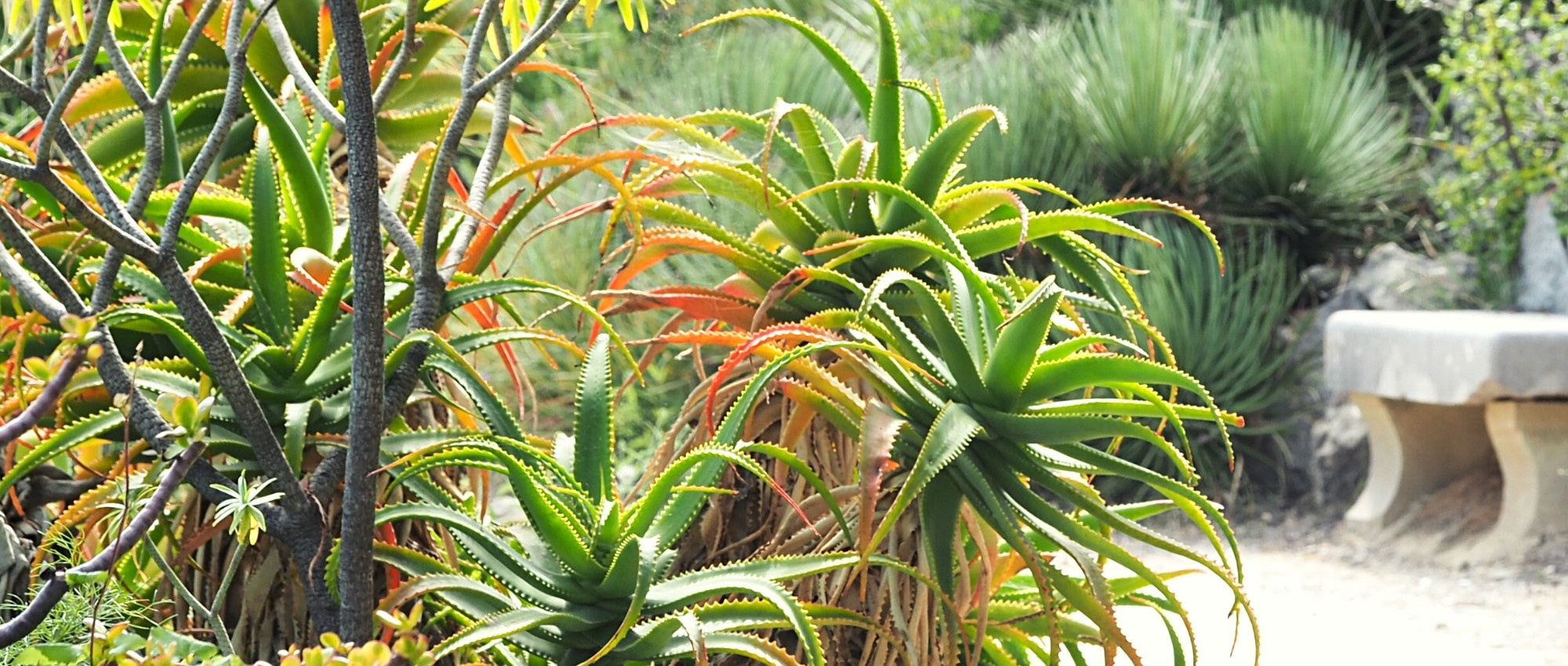
Choosing an Aloe for your garden
Our tips for finding the ideal variety!
Contents
Aloes are beautiful fleshy plants that form rosettes of evergreen, long leaves. There are hundreds of species and numerous varieties, which can sometimes make the choice difficult! There can be various reasons to choose an Aloe: for its medicinal properties, like the famous Aloe vera, for its foliage, which can have very original colours and shapes, and even for its flowering, which is reminiscent of Kniphofia… Moreover, while the most well-known Aloes are tender and typically grown indoors, under cover, there are a few hardy species that can be planted in the garden in regions with a mild climate! To help you navigate this, we guide you in choosing an Aloe that meets your expectations.
According to its size
-
The Smallest Aloes
Some Aloes are small and compact, with rosette foliage that remains at ground level. These Aloes, which generally do not exceed 30 cm in all directions, are perfect for pot cultivation. They can also fit into a small rockery, alongside other succulent plants such as sedums, houseleeks, echeveria, the cactus Echinopsis subdenudata, and more.
- Aloe ‘Safari Sunrise’: this Aloe forms rosettes of dark green leaves and produces spikes of tubular flowers that start off cream and then turn orange at the end of winter.
- Aloe aristata: it forms lovely rosettes of green leaves beautifully speckled with white. It has the advantage of being hardy down to -10 °C.
- Aloe polyphylla: appreciated for its rounded rosette shape, made up of imbricate leaves in a perfect spiral!
- Aloe brevifolia: this is a spreading Aloe that forms tight, compact rosettes of dark green leaves. It produces beautiful orange flower spikes at the end of winter.
- Aloe rauhii ‘Cleopatra’: this Aloe forms very original rosettes, composed of green leaves speckled with numerous white spots. It sometimes takes on orange hues along the edge of the lamina. It does not exceed 20 cm in height and 30 cm in spread. As it cannot withstand frost, it is important to protect it in winter.
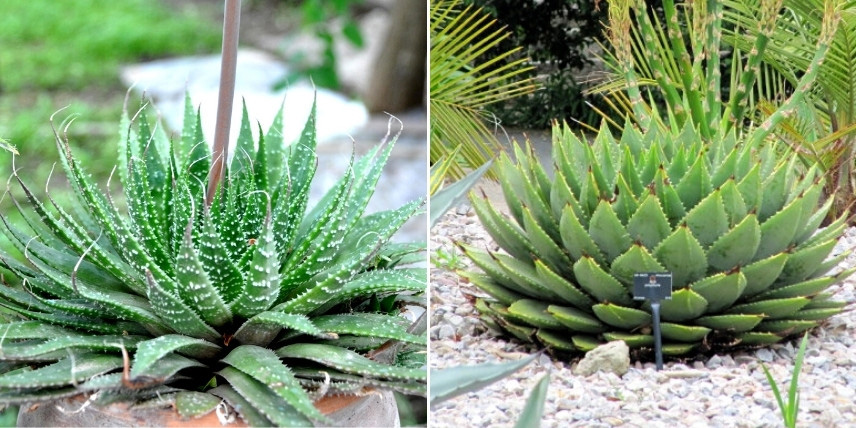
Both Aloe aristata and Aloe polyphylla are relatively small. They form a rosette that stays at ground level and can easily be grown in pots (photos: Lazaregagnidze / Leonora Enking)
-
The Large Aloes
In contrast, some species grow much taller! These Aloes are stunning in the ground, in an exotic bed or a sunny rockery, under a relatively mild climate.
- Aloe arborescens: this Aloe takes the form of a large bush made up of rosettes with elongated leaves. It can reach up to 1.5 m in height and 2.5 m in spread. Under ideal conditions, it can even grow up to 4 m tall. However, it is not hardy and therefore needs to be grown in pots and brought indoors for winter, except in the mildest regions, such as the Mediterranean coast.
- Aloe striatula: this is the most cold-resistant bush Aloe (down to -10 °C). At maturity, it can reach 1.5 m in height and 2 m in spread.
- As for Aloe marlothii, it can reach up to 3 or 4 m tall at maturity.
- There is even a climbing Aloe, Aloe ciliaris! However, it is rarer in cultivation and less easy to obtain than other varieties.
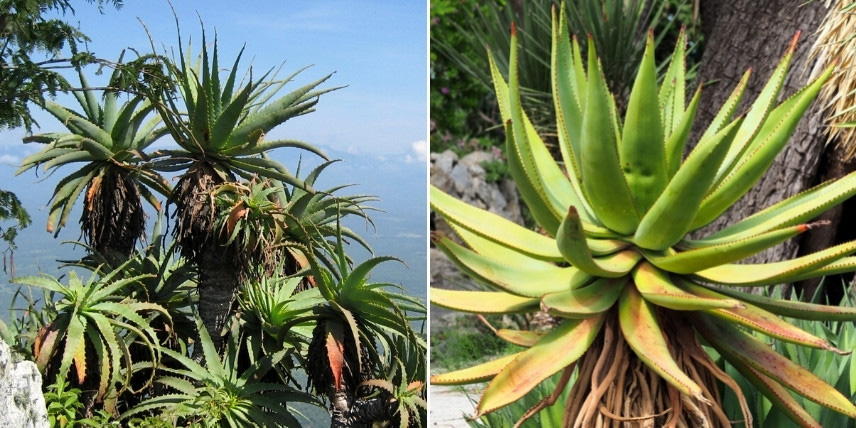
Both Aloe arborescens and Aloe marlothii take on a bushy form and can become very large over time! (photo left: Ton Rulkens)
→ More tips with our sheet on growing Aloe in pots
Read also
Aloes: planting, growing and careAccording to the shape and colour of the foliage
-
According to Leaf Colour
- In terms of colour, the most original is undoubtedly the Aloe rauhii ‘Cleopatra’ (also known as Aloe ‘Snowflake’). It has very triangular leaves, a grey-green hue, punctuated by countless white spots, and sometimes slightly orange at the edges of the lamina. The leaves are also rough to the touch.
- For variegated foliage: choose Aloe variegata, which has irregularly striated white leaves, the Aloe squarrosa or the Aloe aristata, with green leaves speckled with small white spots.
- For red foliage: we recommend Aloe cameronii, which takes on a beautiful scarlet hue, or the Aloe morogoroensis, with green leaves more or less washed with red.
- Finally, for relatively uniform green foliage, you can opt for Aloe vera, Aloe polyphylla, Aloe striatula, Aloe spinosissima or Aloe arborescens.
Similarly, in general, Aloe leaves tend to turn red under direct sunlight and drought.
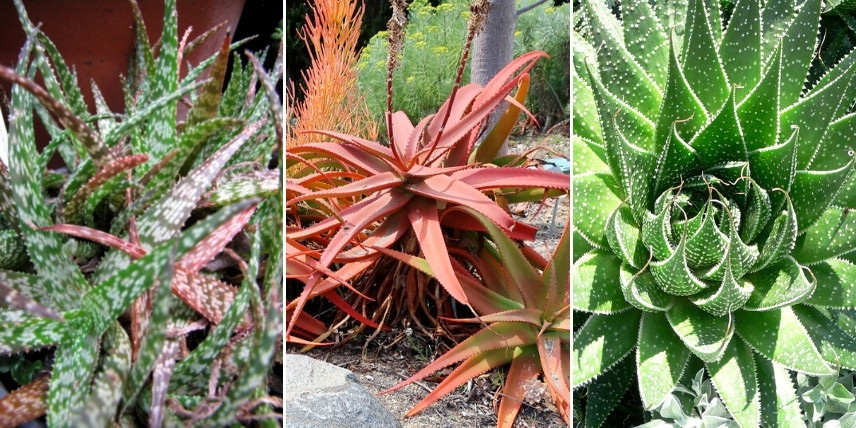
Aloe rauhii ‘Cleopatra’, Aloe cameronii, and Aloe aristata (photos: Forest and Kim Starr / Ton Rulkens / Raul654)
-
According to Leaf Shape
Aloes can form small, dense, and well-structured rosettes made up of tightly packed leaves, or conversely, take on a much looser and airier habit, with much longer and spaced-out leaves. Additionally, some aloes are spiny, while others have rather smooth foliage.
- For spiralled rosette foliage: choose the Aloe polyphylla, whose small leaves are imbricate in dense, geometric spirals!
- For small, dense rosette foliage: choose the Aloe aristata. It forms rounded and regular rosettes, very graphic. You can also opt for the Aloe brevifolia, with a dense, ground-covering habit.
- For a more open and airy foliage: choose the Aloe vera, whose long leaves give it a more open and irregular habit. We also appreciate the Aloe striatula, which bears very long and tapered leaves.
- For original foliage edged with thorns: choose Aloe spinosissima or Aloe brevifolia. The small thorns that punctuate the edge of the lamina make their foliage very decorative!
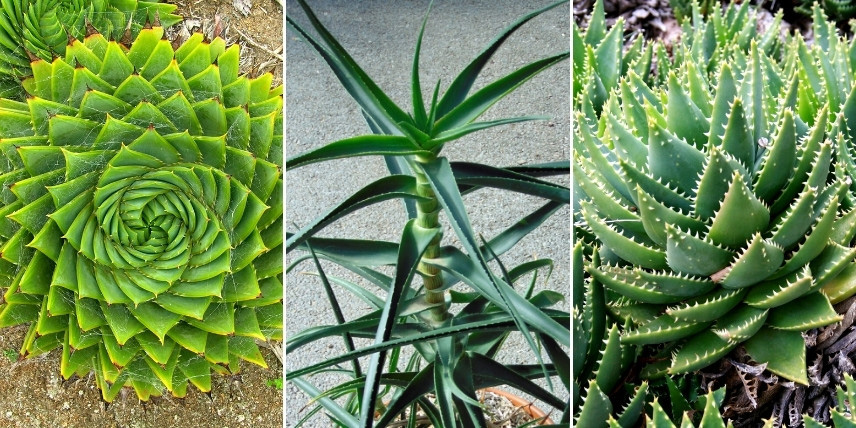
The Aloe polyphylla (photo brewbooks), Aloe striatula and Aloe brevifolia (photo Frank Vincentz)
Discover other Aloe
View all →Available in 1 sizes
Available in 1 sizes
Available in 1 sizes
Available in 1 sizes
Available in 2 sizes
Available in 1 sizes
Available in 3 sizes
Available in 1 sizes
Available in 1 sizes
Available in 1 sizes
According to the colour of the flowers
- For a bicolour flowering: Aloe ‘Safari Sunrise’ produces beautiful spikes made up of flowers that start off cream and then turn orange as they bloom. As the flowers do not all open at the same time, you can observe their different shades on the spikes, creating a lovely gradient!
- If you desire a vibrant orange flowering, opt for Aloe arborescens, Aloe brevifolia, or Aloe succotrina.
- If you prefer yellow flowers, choose Aloe striatula, which produces a very bright flowering with long, slender spikes.
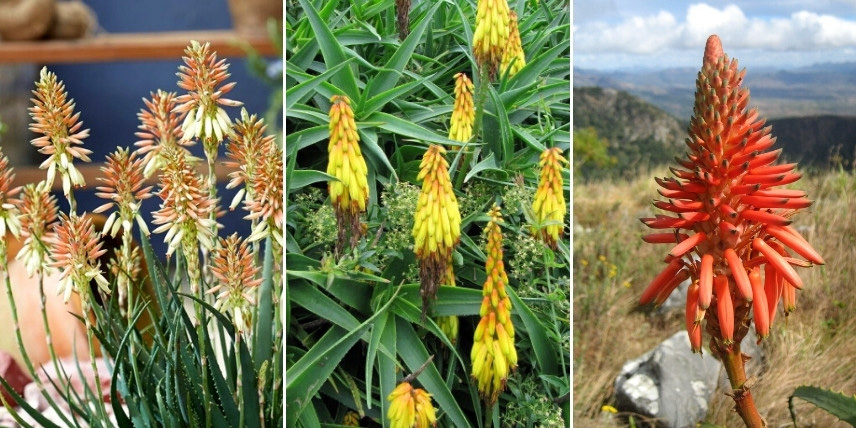
Aloe ‘Safari Sunrise’, Aloe striatula (photo Leonora Enking) and Aloe arborescens (photo Ton Rulkens)
Read also
7 iconic cacti and succulent plantsAccording to hardiness
Aloes are rather tender plants; however, some tolerate cold much better than others.
-
The hardiest Aloes
The Aloe aristata, Aloe polyphylla, and Aloe striatula can withstand temperatures down to -10 °C. They can therefore be planted outdoors in regions with a mild climate. However, they need to be grown in well-draining soil, preferably on a mound or raised bed, as they dislike stagnant moisture, which can cause them to rot.
The other Aloes are relatively tender. Among them, Aloe morogoroensis, Aloe squarrosa, Aloe rauhii ‘Cleopatra’, and Aloe arborescens do not tolerate frost. Avoid growing them outdoors (unless you have a very protected microclimate or live along the Mediterranean coast, for example).
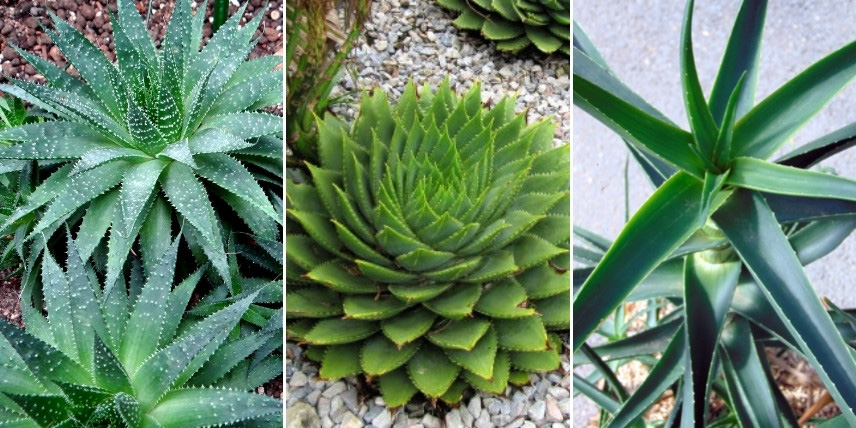
The Aloe aristata (photo Jerzy Opioła), Aloe polyphylla (photo Leonora Enking), and Aloe striatula are among the hardiest, as they can withstand temperatures down to -10 °C
Depending on the use
- For outdoor cultivation, in a border or rockery: choose a relatively hardy Aloe, and favour larger varieties, such as Aloe striatula, for an impressive effect.
- You can also create a rockery with small succulent plants, using Aloe aristata or Aloe polyphylla. These three Aloes can withstand temperatures down to -10 °C in well-drained soil.
- If you live in a region with a very mild climate, such as the Mediterranean coast, where the risk of frost is very low, you can afford to grow stunning varieties like Aloe arborescens or Aloe succotrina outdoors.
- For pot cultivation: choose the smallest varieties. You can grow less hardy Aloes this way, as it will be easy to shelter them during winter. You can also take them out onto your terrace or balcony in summer. We recommend Aloe aristata, Aloe spinosissima, or Aloe brevifolia for this use.
- Finally, for indoor pot cultivation all year round: choose Aloe vera. It grows very well indoors and is also reputed to be an air-purifying plant.
For its medicinal properties
Aloe vera and Aloe arborescens are excellent medicinal plants. The former is obviously the most well-known and widely used. It aids in healing, effectively combats burns, sunburn, irritations, and other skin issues. It has the advantage of being detoxifying, antioxidant, boosting the immune system, and rich in vitamins and minerals.
However, Aloe arborescens also has remarkable properties. It is much less known but is stimulating, antioxidant, and helps fight cancer.
→ Read Gwenaëlle’s tips in Beauty, cooking: how to harvest and use aloe vera?
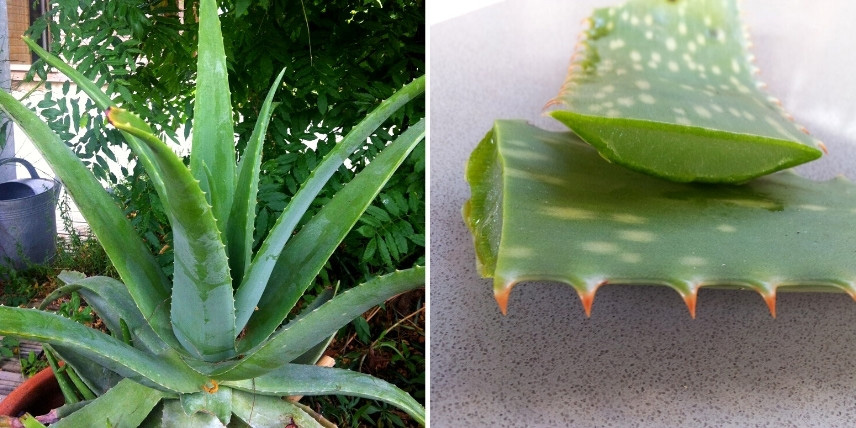
Aloe vera is known for its medicinal properties
To go further
- Discover our complete range of Aloes
- To learn all about their cultivation, check out our sheet “Aloes: Planting, Growing and Caring”
- Subscribe!
- Contents
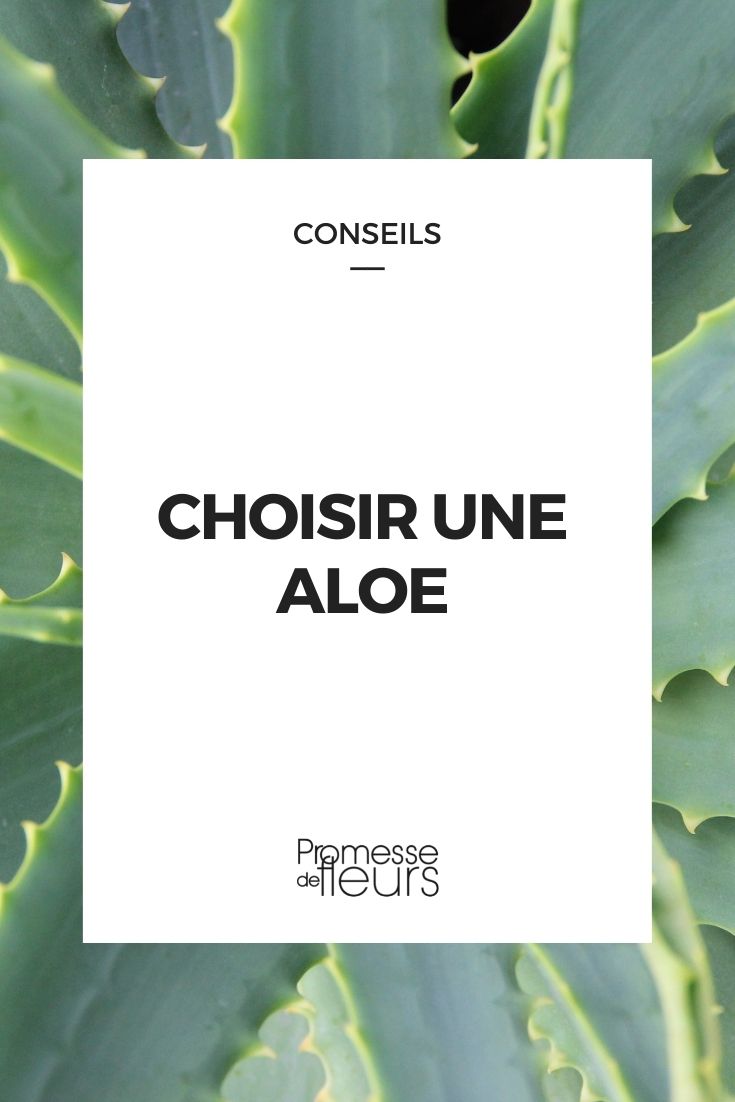































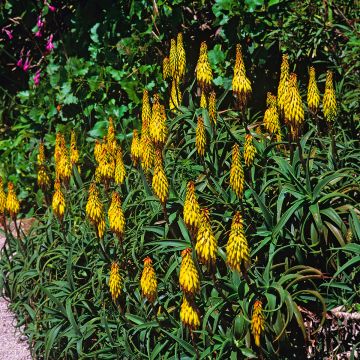
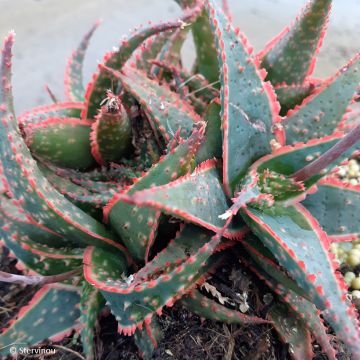
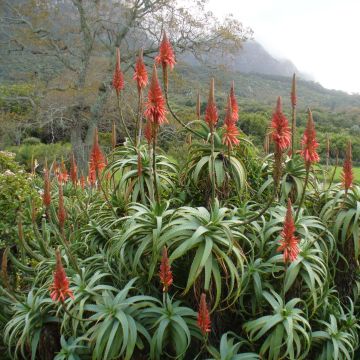
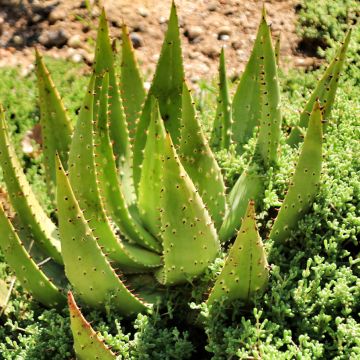
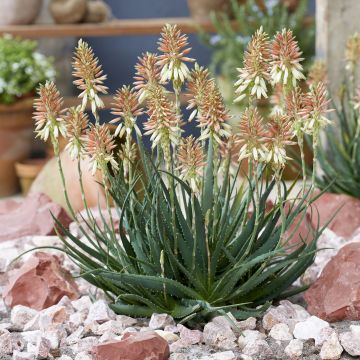
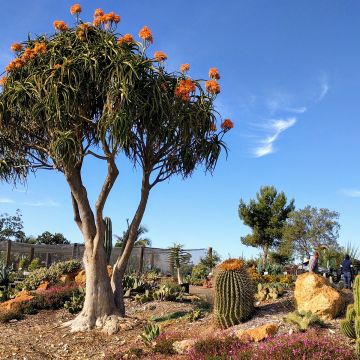
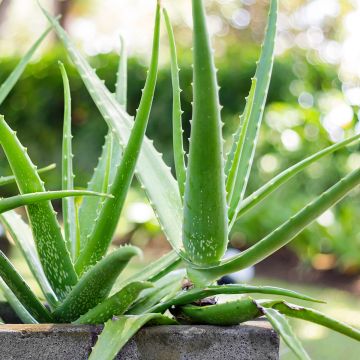
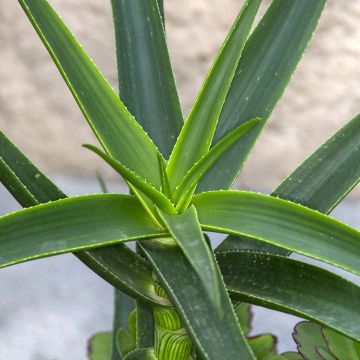
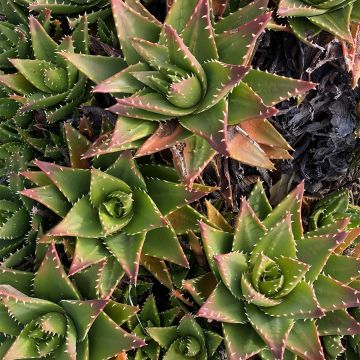

Comments